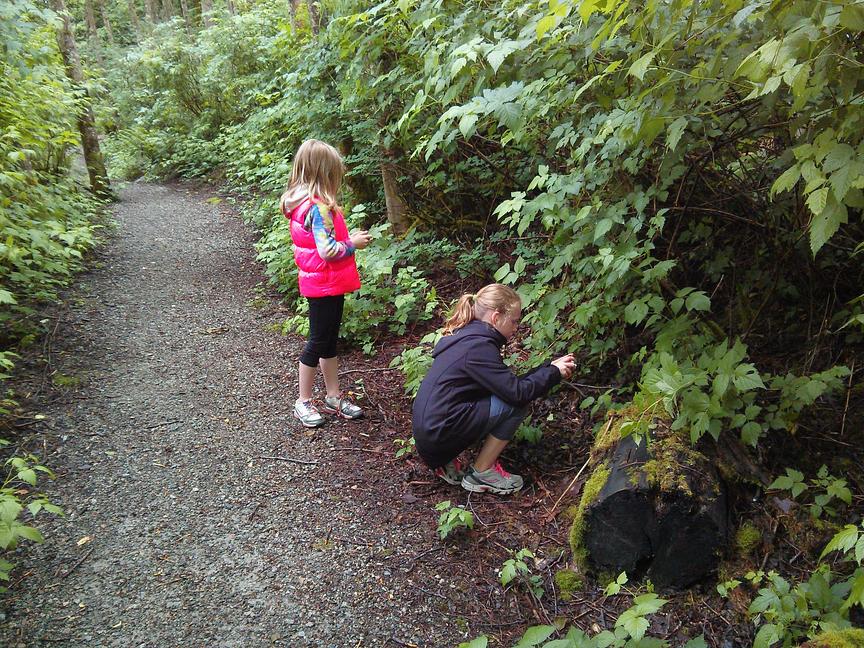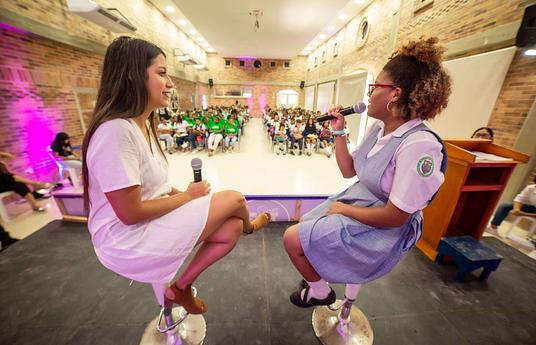Available in ENGLISH,SPANISH, and FRENCH.
What we do?
Teachers in urban, sub-urban, and even in rural areas, often have little imagination-focused curricular resources that can develop students’ sense of ecological understanding and contribute to their understanding of the mandated curriculum. This resource can help to fill that gap. Through walking we can enrich our students’ sense-making abilities, we can enhance their very being and, as we go, we can seed with meaning the contexts in which they spend so many hours learning.
In the 60 walks described in this resource you will see a variety of themes, perspectives, and motivations. For example, students may be asked to find different things (such as shapes, spaces or lines, evidence of growth or change, “the best” hiding places), to change perspectives (imagine being a beetle, a detective, or a visitor from outer space), to encounter the world differently (emphasizing one sense over another or moving through space differently), to seek evidence of human-nature relationships, to identify patterns, or to locate natural or human systems in action. In all cases, the intent is to broaden students’ awareness of the particularities of Place. The activities are designed to: engage the body, emotions, and imagination in ways that can increase students’ familiarity with the local natural context in which they go to school; increase students’ attention to detail and their attunement with Place; connect Place-based learning activities with cross-curricular goals; and serve as examples for your own, Place-inspired teaching ideas.Introductory chapters provide a rationale for the Walking Curriculum and describe the underlying educational philosophy it reflects. Detail is provided so you can prepare to use the resource as well as extend and enrich your students’ learning. The walks themselves are divided into three sets: The 30 walks are paired with guiding questions and an imaginative activity or prompt to engage students’ emotions. These are the easiest walks for you to employ; they require little direct teaching or guidance ahead of time. They are readily adaptable for students of all ages. The second set contains 15 walks requiring some direct instruction and guidance; they will work better if they are properly introduced and contextualized. The final set of 15 walks is specifically designed for High School students and reflects interdisciplinary curricular outcomes. Find out more on the WalkingCurriculum webpage(on imaginED).
Why we do it?
If the message of this resource was a hashtag it could be #getoutside. The simple act of taking a walk—a walk with a curricular focus or purpose—can have multiple positive consequences—many of which are much more profound than we ever imagine. For example, walking can support students’ health and wellbeing by getting them moving. It can also emotionally and imaginatively engage learners by changing the “context” of learning (“context” meaning both location and the form of attention and involvement required of students).
On a deeper level walking-based practice connects curriculum topics with/in the real world. A new level of curriculum relevance can emerge for students as a result. Going even deeper, walking-based practice can support students in developing a sense of Place. Sense of Place, here, refers to an emotional connection to some aspect of the wildness in the world that surrounds them. Sense of Place involves a sense of community. Sense of Place is what can change how our students understand the world of which they are part—it can help them re-imagine their relationship with the natural and cultural communities they live in (Judson, 2010, 2015) in ways that support both the well-being of humans and the more-than-human world.
The Walking Curriculum provides us with easy-to-use, child-centred and developmentally appropriate activities that make outdoor learning – regardless of whether you’re surrounded by trees or concrete – memorable, meaningful and fun. (Karen Hiscott, Principal)
This Walking Curriculum challenges teachers to re-imagine how they teach and it encourages teachers to personally re-connect to Place and community. The #getoutside message involves acknowledging that our communities—natural and cultural—are teachers, too. This Walking Curriculum breaks down concepts of “school” that keep students inside and inactive. So, this book offers practical strategies and examples, but, more profoundly, it encourages teachers to have a new outlook on their teaching. It will empower teachers to #getoutside (physically outside and, figuratively, “outside” by rethinking how they engage their students). It invites teachers to grow beyond the book within an online community of K-12 imaginative ecological educators.
Doing the walks has been highly motivational for me as a teacher and a life-long learner. (Courtney Robertson, Vice Principal/Teacher)
I took my class (Grades 3/4) and another class (Grades 1/2) for the “shapes walk” on Tuesday through the wooded ravine area and neighbourhood near our school. I gave them a handout, and after a brief discussion/instruction period, away we went. We have been on many walks, but this one was very different. The other teacher and I could not believe how engaged they were (and this is not an easy group). They noticed things they had never noticed before. They saw the diamonds in the metal that covered the wood bridge. They saw the rectangles in the stairs; one of my students ‘saw the leaves that represented stars’. They decided to make another chart on the back to show the shapes they saw that were not on the original chart. It was fantastic! I look forward to trying the other walks. (Dina Lenning, Teacher)
I enjoyed this book on many levels! As a teacher and author, I liked the practical and immediate activities that I can do with students of all ages. There are numerous suggestions for connections to a curriculum. As someone who has lead nature-based activities in an after-school program, I enjoyed the many suggestions of how to get kids outdoors moving around and experiencing nature. You can't go wrong connecting school, nature, and exercise! This is a great book for all teachers K-12! (Charles A. Fisher, Teacher)
ALL NEW EARLY YEARS EDITION
A Walking Curriculum for the Early Years: Developing Sense of Place By Sparking Curiosity and Wonder(McKay, Redford, Judson, 2023) includes 33 walking themes paired with cognitive tools to engage emotion and imagination in learning.
It is an innovative, interdisciplinary resource designed specifically for Early Years Educators and outlines an imaginative and ecological approach to taking student learning outside school walls. Specifically, it shapes A Walking Curriculum (Judson, 2018) for primary-aged learners. Educators in urban, suburban, and even rural areas often have few imagination-focused curricular resources that can develop students’ sense of ecological understanding, through play, wonder, and walking – this resource can help fill that gap.


